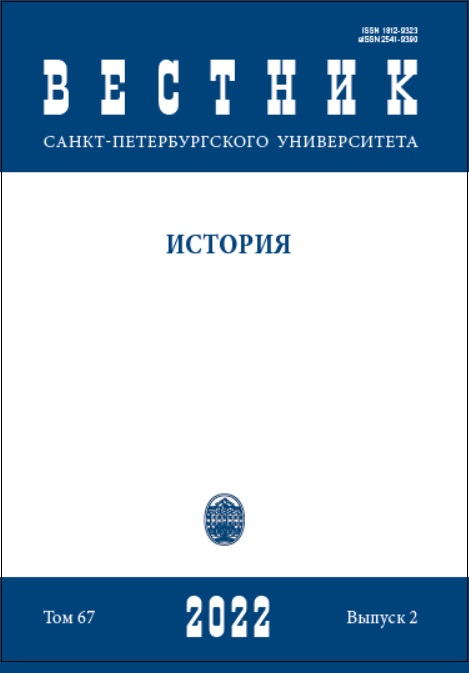Amanats and Diplomats in Russian-Caucasian Relations
DOI:
https://doi.org/10.21638/11701/spbu02.2022.219Abstract
Studying the history of the North Caucasus and the relations between Russia and the peoples of North Caucasus is one of the main tasks of national scholars. Unfortunately, the number of researches into this theme is not large. That is why an interesting book written by F. A. Ozova, a well-known Caucasian historian, is worthy of attention. Her book is devoted to the institute of amanatism in the context of the Russian-Caucasian relations during 16th–19th centuries. This is a high-quality research based on a wide range of historical sources of different origins. Some of these sources are introduced into the scholarships for the first time. The historian created a very bright and detailed portrait of the institute of amanatism, which enables readers to see a colourful multitude of such amanats: from noble dukes to ragged boys seen by A. Pushkin during his journey to Arzrum. However, it is difficult to agree with some ideas concerning the historical development of Russia and Cherkessia and also with the role of the institute of amanatism in their relations. The author tends to modernize the history of Cherkessia / Kabarda to a large extent, perceiving it as some feudal and some estate-representative state. Nevertheless, according to the modern approach and level of the knowledge, the character of many institutes both in the mountains and on the plains was archaic. The institute of amanatism served first of all as some tool of annexing new lands to Russia.
Keywords:
the institute of amanatism, the Russian-Caucasian relations, an estate-representative state, feudalism
Downloads
References
References
Downloads
Published
How to Cite
Issue
Section
License
Articles of "Vestnik of Saint Petersburg University. History" are open access distributed under the terms of the License Agreement with Saint Petersburg State University, which permits to the authors unrestricted distribution and self-archiving free of charge.





